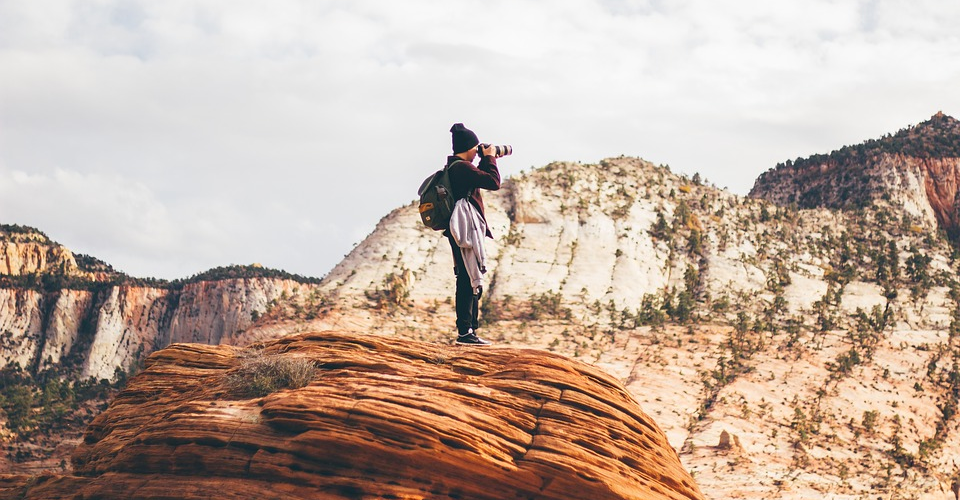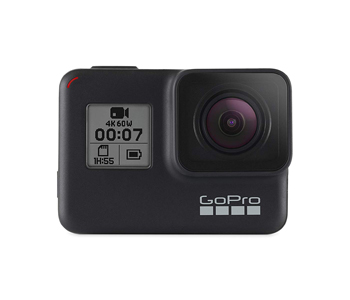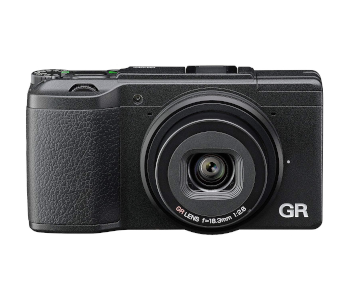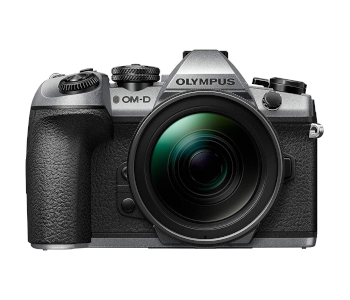8 Best Camera for Hiking in 2020
The best camera for hiking depends on several factors. You need light yet competent equipment if you’re always on the move. Moreover, the ideal hiker’s camera is rugged and able to withstand accidental drops, knocks, and weather extremes. The 8 mini-reviews on this page point to some of the current favorites and highlight the reasons why they’re so popular.
| Budget |
|---|
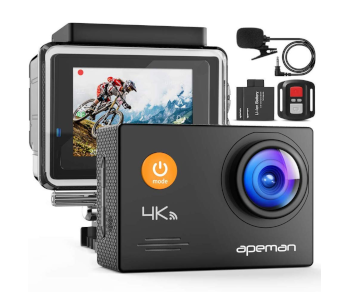 |
| APEMAN A79 Action Camera |
| 4.6/5.0 |
| Image: 20MP |
| Video: 4K |
| Small and compact, 20MP photos, external mic, remote control. |
| Check Amazon |
| Best Value |
|---|
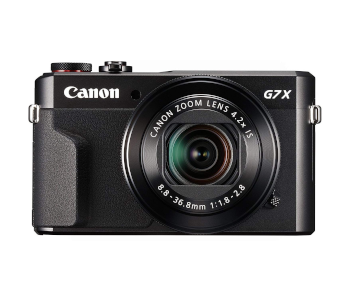 |
| Canon PowerShot G7 X Mark II |
| 4.8/5.0 |
| Image: 20MP |
| Video: 1080p |
| Zoom lens, wide aperture, tilting screen, fast AF, low-light performance, video. |
| Check Amazon |
| Top Pick |
|---|
 |
| Fujifilm X-E3 Mirrorless |
| 4.7/5.0 |
| Image: 24MP |
| Video: 4K |
| Touchscreen, built-in viewfinder, WiFi, external mic port, flash sync port. |
| Check Amazon |
Weather-Resistant Claims
Weather-sealed cameras and lenses can be invaluable for outdoor photography. The downsides are that they tend to be heavier and cost more. Thus, a camera maker reserves weather-sealed equipment for its most expensive models. Other things to look for are water-resistance, dust proofing, and drop-resistant properties. In all cases, be cautious of any protective claims and treat your gear with care.
Only you know where your hiking takes you and the type of photography you’re into. Hikers are more at risk of dropping and bumping their gear than the casual vacationer. Therefore, a rugged build and a camera that can handle temperature changes should be key priorities.
Buyer Considerations
Think carefully about the type of stuff you intend to photograph or video. It’s frustrating if a lens can’t zoom in far enough to capture a distant event or object. Likewise, not having a wide-enough angle to get a nearby object into the frame is also upsetting. You may want a lens with macro capability to take photos of the little things you meet along the way.
Here’s a quick list of buying considerations that can help you to narrow down your choices:
- Set a min/max budget
- Size and weight of the camera and any accessories
- Weather-proofing (see above)
- Field of view (FOV), zoom, wide-angle, telephoto
- Maximum aperture of a lens
- Sensor size (bigger is better)
- Battery life, measured by shots per charge
- Charging options and charging times
- Cost of spare batteries
- Controls, on-screen and manual options
- Pop-up flash, hot-shoe to mount an external flash
- Video capabilities, audio quality, option to use an external mic
- Accessories, e.g., tripod/monopod, lenses, filters, and cables, etc.
Add, remove, or modify anything in the list above as it relates to your expectations.
The Best Hiking Camera—for YOU
You may only need a good-quality point-and-shoot compact camera. Some of the newer models are exceptional too. Others might want a mirrorless or DSLR camera with interchangeable lenses. The point is to think carefully about what you need and why. That way, you can make a well-informed decision. I include the camera highlights for each model in the reviews along with the main specs.
About My ‘Best Camera for Hiking’ Guide
There are 8 mini-reviews below, chosen from several dozen models. These are different types of cameras, but all make worthy travel companions on the trail. I took user feedback and the opinions of industry experts into consideration, along with personal thoughts. The first three hike-friendly cameras are the Editor’s Choice picks. They are Best Budget camera, Best Value, and the Top Pick.
Cameras for Hiking Comparison Table
1. APEMAN A79 4K 20MP Action Camera | Best Budget
Editor’s Rating: 4.6/5
The Best Budget pick goes to the APEMAN A79 4K 20MP Action Camera. It’s easily one of the most popular models in its price category. It’s also much cheaper than GoPro alternatives.
- Best feature 1: Rugged and waterproof
- Best feature 2: 4K Ultra-HD video
- Plus points: Small and compact, 20MP photos, external mic, remote control, bonus battery
- Minus points: Average audio quality, not too good in low light, no zoom feature
APEMAN A79 Action Cam Highlights
This little action camera boasts tack-sharp 24MP photos and shoots smooth 4K video. It’s the perfect cam for hikers who get near to or under the water. The included housing can withstand water pressure for three days. You can take this puppy underwater down to 131ft (40m). The 2.5mm external mic port is a nice idea, though audio recording is not the camera’s strong point.
Other A79 standout features include electronic image stabilization (EIS) and built-in WiFi. This action cam comes with a bunch of record settings too. Some of those include Time-lapse, Burst Mode, Slow-motion, and Self Timer. It also has a 33ft (10m) remote control range. Remote control can be a priceless feature for lone hikers. The APEMAN A79 comes with a bonus 1050 mAh battery (2 total).
The Not So Good
Don’t expect the camera’s sound quality to blow you away because it won’t. It’s perfectly audible, but that’s all it has going for it. The camera underperforms in low-light situations, and footage often appears grainy. The fixed lens has no zoom function, either. Still, it’s important to remember the price of this action camera, and it offers excellent value all things considered.
| Tech Specs |
|---|
| Brand Name: APEMAN |
| Camera Type: Action camera |
| Sensor: Sony 20MP |
| Video Resolution: 4K |
| Stills: 20 megapixels |
| Waterproofing: Housing (131ft) |
| Card Storage: Class 10+, 8 to 64GB |
| Battery: 1050mAh lithium-ion |
| Battery Life: 1+ hours of 4K recording |
| Screen Type: 2” LCD (not touchscreen) |
| Camera Weight: 17.6 oz. |
| Dimensions: 2 x 1.2 x 0.8” |
| The Pros |
|---|
| Rugged and waterproof |
| Small, compact, and versatile |
| 4K Ultra-HD video |
| 20MP stills |
| External mic port |
| Remote control |
| Bonus battery |
| Includes waterproof housing |
| Image stabilization |
| WiFi connectivity |
| Various shooting modes |
| Excellent value |
| The Cons |
|---|
| Average audio quality |
| Not good in low light |
| No zoom lens |
2. Canon PowerShot G7 X Mark II Camera | Best Value
Editor’s Rating: 4.8/5
Canon’s PowerShot G7 X Mark II makes the Best Value slot. It’s an excellent hiking camera due to its lightweight, ultra-portable design. It packs quite a punch too, despite the small form.
- Best feature 1: Small, travel-friendly design
- Best feature 2: Exceptional build, rugged construction
- Plus points: Zoom lens, wide aperture, tilting screen, fast AF, low-light performance, video
- Minus points: Shallow grip, low-average battery life
Canon PowerShot G7 X Mark II Camera Highlights
The build quality of the PowerShot G7 X Mark II is second to none for a camera in its class. It sports a 1” 20MP, BSI-CMOS sensor, a fast, 24-100mm zoom Lens, and image stabilization. Max aperture settings are f/1.8 to f/2.8 consecutively. On the rear of the G7 X Mark II is a 3” selfie-friendly tilting touchscreen display. That’s useful for solo hikers who like to get into the frame.
Another handy feature for hikers is the fast autofocus tracking. Others include RAW shooting, manual exposure and focus, and remote control. The camera also has a practical built-in neutral density (ND) filter. And the built-in Wi-Fi makes light work of transferring data between compatible devices.
Canon PowerShot G7 X Mark II Vs. Mark III
The newer version is out and called the Canon PowerShot G7 X Mark III. It’s another powerful performer, but is it worth the extra 150 dollars? Only you can decide. The Mark III is 1/2 oz. lighter, has higher video resolution, and Bluetooth connectivity. It has a microphone port for recording better audio quality as well. The G7 X Mark II has NFC connection, though, and longer battery life.
The Not So Good
Photographers with large hands may find the grip on this camera a tad shallow. A good grip on any camera—especially smaller models—is a significant buying consideration for hikers. Another negative is the low average battery life. In ideal situations, it gives 265 shots for a single charge. One extra battery adds around 50 dollars to the price of the G7 Mark II.
| Tech Specs |
|---|
| Brand: Canon |
| Camera Type: Point-n-Shoot Compact |
| Zoom: 4.2 x optical |
| Sensor Size: 1” 20.1MP |
| Video Resolution: FHD 1080p |
| Max Aperture: f/1.8 and f/2.8 |
| Image Stabilization: Yes |
| Max ISO: 12,800 |
| RAW Support: Yes |
| Max Shutter: 1/2000 sec |
| Card Storage: UHS-I |
| Battery Life: 265 shots per charge |
| Articulating Screen: 3.0” tilt-n-touch |
| Camera Weight: 22.4 oz. |
| Dimensions: 1.6 x 2.4 x 4.2” |
| Warranty: 1 year limited |
| The Pros |
|---|
| Small, travel-friendly design |
| Exceptional build, rugged finish |
| Fast integrated zoom lens |
| Wide maximum apertures |
| Selfie-friendly tilting touchscreen |
| Fast autofocus (AF) |
| Superb low-light performance |
| Good quality video recordings |
| RAW shooting |
| Face detection focusing |
| Time-lapse recording |
| AE bracketing |
| Built-in ND Filter |
| Manual focus |
| Manual exposure control |
| The Cons |
|---|
| Shallow grip |
| Low-average battery life |
| No weather sealing |
| Heavy for a compact camera |
3. Fujifilm X-E3 Mirrorless Digital Camera | Top Pick
Editor’s Rating: 4.7/5
The Editor’s Top Pick is Fujifilm’s X-E3 entry-level mirrorless digital camera. It boasts a 24MP, APS-C X-TRANS III CMOS sensor, and a high-performing X-series processor.
- Best feature 1: Lightweight, travel-friendly body
- Best feature 2: Powerful, high-res sensor
- Plus points: Touchscreen, built-in viewfinder, WiFi, external mic port, flash sync port, 4K
- Minus points: No tilt screen, low battery life, no weather sealing, no stabilization
Fujifilm X-E3 Mirrorless Camera Highlights
Fujifilm’s X-E3 is a fantastic mirrorless camera for those getting serious about their hobby. Its small form, lightweight body, and intuitive controls make it an ideal hiking camera. The built-in electronic viewfinder is vital when bright sunlight makes the fixed 3” LCD touchscreen hard to see. A tilt screen would be handy, though some hikers see it as one less thing to go wrong or break.
My sample here includes the Fuji XF 23mm f/2 lens, but you can buy the body only and choose your glass. The lens takes exceptional photos with a classic look and fairly wide field of view (FOV). It’s a well-constructed lens that should last forever with proper care. Other X-E3 highlights include built-in WiFi, a flash hot shoe, and an external microphone port. The camera can shoot 4K Ultra-HD video.
The Not So Good
Tilt screens are becoming prevalent in modern cameras, but the Fujifilm X-E3 doesn’t have one. You won’t miss it if you’re not used to articulating LCDs, but you will if you are. The camera’s battery life is quite low at only 350 shots per charge. Other missing features are environmental sealing and sensor-based image stabilization. There are 12 or so lenses that have optical stabilization, though.
| Tech Specs |
|---|
| Brand Name: Fujifilm |
| Camera Type: Mirrorless |
| Sensor: 24MP APS-C CMOS |
| Viewfinder: Electronic |
| Video Resolution: 4K |
| Stills: 24 megapixels |
| Card Storage: SD, SDHC, SDXC |
| Battery: NP-W126 Lithium-ion |
| Battery Life: 350 shots |
| Screen Type: 3.0” touchscreen |
| Camera Weight: 11.88 oz. |
| Dimensions: 4.8 x 2.9 x 1.7” |
| The Pros |
|---|
| Lightweight, travel-friendly body |
| Powerful, high-res sensor |
| Touchscreen LCD |
| Customizable menus |
| Focus lever |
| Built-in viewfinder |
| Built-in WiFi |
| External microphone port |
| Flash sync port |
| 4K video |
| Time-lapse recording |
| Face Detection Focusing |
| The Cons |
|---|
| No tilt screen |
| Low-average battery life |
| No weather sealing |
| No stabilization |
4. Fujifilm FinePix XP130 Waterproof Camera
Editor’s Rating: 4.4/5
Meet the Fujifilm FinePix XP130 Waterproof Camera, available in 5 colors. Hikers who swim, dive, or get close to water may want to shortlist this one. It’s quite light, compact, and is super rugged.
- Best feature 1: Fully waterproof, freezeproof, shockproof, and dustproof
- Best feature 2: Wide lens w/ 5x optical zoom
- Plus points: Underwater-ready, 5 colors available, large LCD screen, remote control, filters
- Minus points: Low average battery life, no viewfinder, no touchscreen
Fujifilm FinePix XP130 Camera Highlights
Fujifilm’s FinePix XP130 has a 16MP BSI-CMOS 1/2.3” sensor. The fixed lens is a 28mm–140mm 5x optical zoom. That gives hikers an excellent choice from wide-angle to telephoto in a compact body. Another reason this is an ideal camera for hiking is its protective qualities. You can go underwater with this puppy down to a depth of 65ft (20m), but there’s more.
All-weather hikers should know that the XP130 can function normally in temperatures as low as -10°C. It’s also dustproof and shockproof, with protection up to 5.8ft (1.75m). The camera has image stabilization, a weather-sealed body, manual focus override, and built-in WiFi. Its remote smartphone control can come in useful for lone travelers. And the video shoots in smooth, Full HD 1080p.
The Not So Good
The battery life is an improvement on the XP120, but that’s not saying much. It’s still on the low side of average at only 240 shots per charge. Most hikers need to have at least one fully charged spare with them. The official battery is Fuji NP-45S and cost around 40 dollars each. Other cons are no viewfinder and no tilting LCD touchscreen feature for seamless navigation.
| Tech Specs |
|---|
| Brand Name: Fujifilm |
| Camera Type: Waterproof compact |
| Sensor: CMOS6.4MP BSI |
| Viewfinder: None |
| Waterproof: to 65ft (20 meters) |
| Video Resolution: 1080p |
| Stills: 16.4 megapixels |
| Focus Options: AF only |
| Card Storage: 16GB SD |
| Battery: FUJIFILM NP-45S Lipo |
| Battery Life: 240 shots |
| Screen Type: 3” LCD |
| Camera Weight: 15.2 oz. |
| Dimensions: 8 x 5 x 5” |
| The Pros |
|---|
| 5 vibrant colors available |
| Robust build, comfortable design |
| Large-sized LCD screen |
| Underwater-ready camera |
| Shockproof up to 58ft |
| 5x optical zoom |
| Burst mode |
| Geotagging |
| Bluetooth capability |
| High-speed movie |
| Remote app control |
| 11 filters for special effects |
| Exceptional value |
| The Cons |
|---|
| Poor battery life |
| No viewfinder |
| No touchscreen |
5. GoPro HERO 7 Black the Ultimate Action Camera
Editor’s Rating: 4.5/5
GoPro’s HERO 7 Black is a favorite action camera among hikers, travelers, and adventure seekers. It has a 1-Chip CMOS sensor, takes sharp 12MP photos, and shoots captivating 4K60 video.
- Best feature 1: Small, lightweight and hiker-friendly
- Best feature 2: HyperSmooth Video Stabilization
- Plus points: Rugged, 12MP stills, voice control, live streaming feature, TimeWarp, Slo-Mo
- Minus points: Poor battery life, average low-light capability
GoPro HERO 7 Black Action Camera Highlights
Adventure travelers love the GoPro Hero 7 Black because it’s tiny, versatile, and easy to use. There’s no messing around with complicated menus, lens changes, or moving parts. This model comes with HyperSmooth IS, which is next-level EIS or Electronic Image Stabilization. The protected lens is made from durable, scratch-resistant Corning glass. The viewing angles are Wide and Super-view.
GoPro’s HERO 7 Black is waterproof—without housing—down to a depth of 33ft (10m). Other remarkable features are voice-activated controls, live-streaming, and TimeWarp video. You can slow down mesmerizing video capture to 8x slow-motion.
The Not So Good
There’s little to celebrate with the camera’s battery life. The HERO 7 is lucky if it lasts 1.5 hours on a single charge. Extra HERO 7 batteries are quite reasonable at around 18 dollars. GoPro introduced HyperSmooth EIS with the HERO7, and that’s great. What’s not so great is the camera’s low-light capability. It still shows slightly blurred and grainy video once light levels falls.
| Tech Specs |
|---|
| Brand Name: GoPro |
| Camera Type: Action camera |
| Sensor: 12MP 1-chip CMOS |
| Viewfinder: None |
| Video Resolution: 4K60 |
| Stills: 12 megapixels |
| Card Storage: MicroSD up to 256GB |
| Battery: 3.85 VDC rechargeable |
| Battery Life: 1:45 mins at 1080p, 30fps |
| Screen Type: 2” LCD touchscreen |
| Camera Weight: Approx. 4.13 oz. |
| Dimensions: 2.4 x 1.3 x 1.8” |
| The Pros |
|---|
| Small, lightweight, easy to use |
| Hiker-friendly action cam |
| Waterproof without housing |
| HyperSmooth Video Stabilization |
| Exceptional rugged construction |
| High-quality stills |
| SuperPhoto HDR |
| UHD video |
| Live streaming feature |
| TimeWarp video |
| Slo-Mo (8x) video |
| Voice activation controls |
| The Cons |
|---|
| Poor battery life |
| Average low-light video |
6. Olympus Tough TG-6 Waterproof Digital Camera
Editor’s Rating: 4.5/5
Here we have the Olympus TG-6. It’s a rugged, waterproof digital camera with a travel-friendly appeal. The TG-6 is equipped with a 12MP BSI-CMOS 1/2.3-inch sensor and a 25-100mm zoom lens.
- Best feature 1: Rugged, waterproof travel camera
- Best feature 2: Built-in GPS feature
- Plus points: Lightweight, stabilization, environmental sealing, RAW shooting, remote control
- Minus points: No lens cover, average battery life, no tilting touchscreen
Olympus TG-6 Digital Camera Highlights
It’s not called the Olympus “Tough” for nothing. This beauty can withstand a variety of challenging conditions on the trail. Its IPX8 waterproof rating means it can function down to depths of 50ft (15m). The TG-6 can withstand falls from 7ft (2.1m), and freezing temperatures as low as -10°C. Its IP6X dustproof rating protects the camera’s internal components. It’s also crushproof up to 220 lbf/in2.
You can travel with confidence knowing there’s a TG-6 Tough in the backpack. It’s also lightweight and fits comfortably in the hands. The camera has environmental sealing, image stabilization, RAW shooting, and decent battery life. Other features include manual focusing, smartphone remote control, and fast UHS-I card support. Video shoots in 4K ultra HD.
The Not So Good
The TG-6 is tough and waterproof, but a lens cover would have been welcome at this price. There is a cover available, but it cost around 50 dollars. The battery life is only average at about 340 shots per single charge. The good news is that spare LI-92B batteries are not expensive for this model. Another negative—for some—is the absence of an articulating touchscreen display.
| Tech Specs |
|---|
| Brand Name: Olympus |
| Camera Type: Waterproof compact |
| Sensor: 12MP BSI-CMOS 1/2.3” |
| Viewfinder: None |
| Video Resolution: 4K |
| Stills: 12 megapixels |
| Card Storage: UHS-I |
| Battery: LI-90B, LI-92B Lithium-Ion |
| Battery Life: 340 shots |
| Screen Type: Fixed 3” LCD |
| Camera Weight: 8.92 oz. |
| Dimensions: 4.45 x 2.6 x 1.26” |
| The Pros |
|---|
| Rugged, hiking camera |
| Fully waterproof |
| Shockproof & crushproof |
| Freezeproof down to -10C |
| Fast lens |
| Built-in GPS feature |
| Built-in WiFi |
| Lightweight, ergonomic design |
| Image stabilization |
| Manual focusing |
| Face detection focusing |
| Time-lapse recording |
| Environmental sealing |
| RAW shooting |
| Remote control via smartphone |
| The Cons |
|---|
| No lens cover included |
| Lens cover a costly extra |
| Average battery life |
| No tilting touchscreen |
7. Ricoh GR II Digital Travel-Friendly Camera
Editor’s Rating: 4.6/5
The penultimate pick goes to the Ricoh GR II Digital Camera. It has a 16MP APS-C, CMOS sensor, and a fixed, 28mm prime lens. This is a light camera yet a rugged survivor out on the trail.
- Best feature 1: Lightweight body, comfortable to hold
- Best feature 2: High-speed AF system
- Plus points: Manual focus and exposure, WiFi, RAW shooting, built-in ND filter, FHD video
- Minus points: Low-average battery life, fixed focal length lens, no tilting touchscreen
Ricoh GR II Camera Highlights
Ricoh’s GR II has been around since 2015 and continues to sell well. That said, it’s a better choice for fair-weather hikers as it doesn’t have environmental sealing. It is durable and extremely well-made, though. The camera boasts a high-speed autofocus system that captures subjects in only 0.2 sec. Creative photographers welcome the manual exposure and manual focus controls.
The GR II has built-in WiFi, NFC (near-field communication) connectivity, and an external flash shoe. Other highlights include the long 320 shots battery life, RAW shooting, and a built-in ND filter. This camera also performs well in low light situations and has smartphone remote control. The Ricoh GR II shoots Full-HD 1080p video up to 30fps (frames per second) with autofocus.
The Not So Good
The battery life is on the low side of average at only 320 shots for stills and 45 minutes recording. Wasabi Power 2 Battery Pack costs around 20+ dollars, so that’s something. The camera has a fixed 28mm focal length lens, which means no optical zoom capability. However, it does have a digital zoom from 35mm to 50mm. Lastly, the GR II doesn’t have an articulating touchscreen.
| Tech Specs |
|---|
| Brand Name: Ricoh |
| Camera Type: Compact |
| Sensor: 16MP APS-C CMOS |
| Viewfinder: None. Optical (Optional) |
| Video Resolution: 1080p Full-HD |
| Stills: 16 megapixels |
| Card Storage: SD, SDHC, SDXC |
| Internal Memory: 54MB |
| Battery: DB-65 Lithium-Ion |
| Battery Life: 320 shots |
| Screen Type: Fixed 3” LCD |
| Camera Weight: 9.6 oz. |
| Dimensions: 1.4 x 2.5 x 4.6” |
| The Pros |
|---|
| Lightweight body, comfortable |
| Well-made camera, rugged |
| Decent battery life |
| Built-in viewfinder |
| High-speed AF system |
| Manual focus override |
| Manual exposure control |
| Remote control via smartphone |
| Pleasing low light performance |
| External flash shoe |
| Built-in WiFi |
| RAW shooting |
| Built-in ND filter |
| Shoots Full HD video |
| Face Detection Focusing |
| AE Bracketing |
| The Cons |
|---|
| Low average battery life |
| No optical zoom |
| Restricted digital zoom |
| No tilting touchscreen |
8. Olympus OM-D E-M1 Mark II Weatherproof Camera
Editor’s Rating: 4.7/5
The last of the best camera for hiking reviews go to the Olympus OM-D E-M1 Mark II. It’s a beautiful, pro-level mirrorless camera that’s ideal for serial hikers and travel journalists.
- Best feature 1: Compact, lightweight, durable travel camera
- Best feature 2: 5-axis image stabilization
- Plus points: Weather-proofed, smooth 4k video, tilting touchscreen, viewfinder, silent mode
- Minus points: Cost, only 1 SD slot supports UHS-II, low-average battery life, complex menu
Olympus OM-D E-M1 Mark II Highlights
The ergonomics of the OM-D E-M1 Mark II are superb. The camera has a deep, comfortable grip and a hermetically-sealed construction with metal parts. The weatherproof body offers splashproof, dustproof, and freezeproof protection down to -10°C. These protective properties allow hikers and travel photographers to shoot in all manner of challenging environments.
Olympus OM-D E-M1 Mark II has 5-axis sensor-shift-type image stabilization. It does an excellent job of minimizing camera shake for handheld shooting. The body features an interactive electronic viewfinder and a 3.0” vari-angle LCD touchscreen. Lone hikers can exploit the remote-control feature using a smartphone. And there’s plenty of storage with the dual memory card slots.
The OM-D E-M1 Mark II has lots of backup as well. An extensive range of lenses and accessories supports the camera, which is also lightweight and weatherproof. It’s a video-friendly model that can shoot in 4K, and it has external ports for microphone and headphones.
The Not So Good
This camera is not cheap, but those who own one will argue that it offers excellent value. It’s still a chunk of change, though. The dual SD card slots are a welcome touch, but only one supports UHS-II. The 350 shots per charge fall on the low side of average for a mirrorless camera in this class. Lastly, the feature-packed menu system is quite complicated for new users.
| Tech Specs |
|---|
| Brand Name: Olympus |
| Camera Type: Pro mirrorless |
| Sensor: CMOS 20MP four thirds |
| Viewfinder: Built-in electronic |
| Video Resolution: 4K |
| Stills: 20 megapixels |
| Card Storage: Dual w/ UHS-II support |
| Battery: BLH-1 lithium-Ion |
| Battery Life: 350 shots |
| Screen Type: 3” LCD touchscreen |
| Camera Weight: 20.25 oz. |
| Dimensions: 5.28 x 3.58 x 2.64” |
| The Pros |
|---|
| Compact, lightweight, and durable |
| 5-axis image stabilization |
| Weatherproofed construction |
| Flash sync port |
| Smooth handheld 4k video |
| Tilting touchscreen display |
| Eye-level viewfinder |
| Smartphone remote control |
| Dual memory card slots |
| Extensive range of accessories |
| Microphone and headphone ports |
| Face detection focusing |
| Focus bracketing |
| Focus stacking |
| Time-lapse recording |
| Silent mode |
| The Cons |
|---|
| Quite expensive |
| Only one SD slot supports UHS-II |
| Low-average battery life |
| Complex menus |
Contents
- Weather-Resistant Claims
- Buyer Considerations
- The Best Hiking Camera—for YOU
- About My ‘Best Camera for Hiking’ Guide
- Cameras for Hiking Comparison Table
- 1. APEMAN A79 4K 20MP Action Camera | Best Budget
- APEMAN A79 Action Cam Highlights
- The Not So Good
- 2. Canon PowerShot G7 X Mark II Camera | Best Value
- Canon PowerShot G7 X Mark II Camera Highlights
- Canon PowerShot G7 X Mark II Vs. Mark III
- The Not So Good
- 3. Fujifilm X-E3 Mirrorless Digital Camera | Top Pick
- Fujifilm X-E3 Mirrorless Camera Highlights
- The Not So Good
- 4. Fujifilm FinePix XP130 Waterproof Camera
- Fujifilm FinePix XP130 Camera Highlights
- The Not So Good
- 5. GoPro HERO 7 Black the Ultimate Action Camera
- GoPro HERO 7 Black Action Camera Highlights
- The Not So Good
- 6. Olympus Tough TG-6 Waterproof Digital Camera
- Olympus TG-6 Digital Camera Highlights
- The Not So Good
- 7. Ricoh GR II Digital Travel-Friendly Camera
- Ricoh GR II Camera Highlights
- The Not So Good
- 8. Olympus OM-D E-M1 Mark II Weatherproof Camera
- Olympus OM-D E-M1 Mark II Highlights
- The Not So Good

